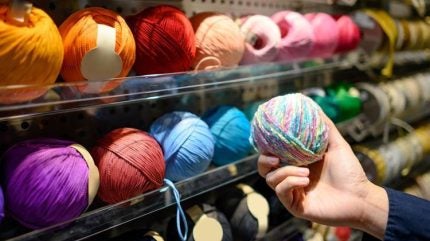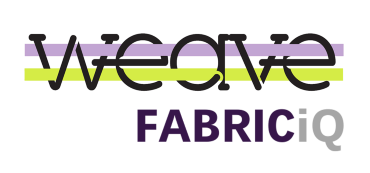
The apparel industry is undergoing a transformative shift, as rising costs, sustainability mandates, and geopolitical uncertainties compel brands to re-evaluate their sourcing strategies. During the recent webinar, Weave: Transforming Fabric and Yarn Costing Management in the Apparel Industry, industry leaders came together to share insights on the evolving landscape of fabric and yarn costing.
The need for industry transformation
The urgency for change is rooted in compelling data. Ludovic Curtil, FABRICiQ product manager at Weave, highlighted data from BOF and McKinsey’s State of Fashion 2023, showing that over 60% of fashion executives aim to optimise or renegotiate sourcing agreements, with a growing focus on fabric and yarn costing as a way to maintain profitability and agility. Similarly, NRF and Colliers reported that 70% of US retailers and brands are still investing in digital transformation, including AI tools that improve sourcing efficiencies.
Curtil noted that while many brands have adopted garment open costing practices, few have extended visibility further upstream to include detailed fabric and yarn costing. “Rare are the ones who implemented any fabric technical costing at the moment,” he said, referring to the detailed breakdown of costs for fabric manufacturing processes such as weaving, knitting, dyeing, finishing, and process losses. He emphasised that fabric technical costing represents a critical step in establishing robust design-to-cost capabilities.
The need for transparency and precision in fabric costing is growing as brands diversify sourcing locations and adapt to challenges like geopolitical tariffs and sustainability regulations. Curtil explained, “leveraging fabric and changing the way fabrics are managed, and in particular how cost is optimised throughout the supply chains, is a rather centralised decision which can have a major impact on P&L.” He also shared that Weave’s costing transformation projects have delivered fabric FOB cost reductions of 5–15%, demonstrating the financial benefits of adopting a systematic approach.
Challenges in fabric costing adoption
The panel discussion brought to light the challenges brands face when implementing fabric costing initiatives. Terry Broderick, Operations Leader at Kiabi, stressed the importance of change management, noting that transitioning from a negotiation-based sourcing model to a data-driven costing approach often requires cultural shifts within organisations. “It involves a significant cultural change in an organisation,” he said, adding that sourcing and buying teams may resist new methodologies if they challenge long-established ways of working.
Bart De Meirsman, Director of Different Dialogue, echoed similar sentiments, he noted that fabric costing is inherently more complex than garment costing due to the technical expertise required to analyse fabric components and manufacturing processes. He emphasised the importance of starting small, focusing on high-volume categories like circular knits, and gradually building a knowledge base through benchmarking and supplier collaboration.
Aravind Nambiar, Digital Director at Weave, pointed out that the apparel industry has historically underinvested in sourcing technologies compared to other sectors like pharmaceuticals or semiconductors. He highlighted the reliance on Excel spreadsheets and inconsistent data collection processes as major roadblocks. “Sourcing teams often rely on Excel superheroes,” Nambiar said, but this approach leads to fragmented data, operational inefficiencies, and limits decision-making capabilities. He advocated for adopting AI-powered tools that can consolidate data, standardise processes, and improve transparency across the supply chain.
The triple unlock: cost, lead time, and sustainability
One of the key themes of the webinar was the broader benefits of fabric costing beyond just cost savings. Curtil described what he called the “triple unlock,” where focusing on fabric not only reduces costs but also improves lead times and enhances sustainability. For example, consolidating and harmonising fabric specifications can streamline production, while greater transparency with Tier 2 and Tier 3 suppliers can enable energy transitions, fair wages, and reduced environmental impact.
As Bart De Meirsman noted, building trust and transparency with suppliers is essential in today’s regulatory and geopolitical environment. “Partnerships are based on trust, and at the same time, they’re based on transparency,” he said, emphasising that brands need to work closely with suppliers to future-proof their supply chains.
Technology’s role in driving change
Technology has emerged as a critical enabler for fabric costing transformation. Weave’s FABRICiQ, showcased during the webinar, is an AI-powered solution designed to simplify and standardise fabric costing. The tool integrates supplier data, builds benchmarks for yarn prices and manufacturing costs, and facilitates real-time negotiations through a user-friendly interface. By leveraging AI and automation, FABRICiQ enables procurement teams to make data-driven decisions and strengthen supplier relationships.
Nambiar explained that FABRICiQ addresses key industry challenges by providing benchmarks for yarn and operational costs, pulling from open cost sheet data and real-time market insights. The platform’s negotiation panel allows procurement teams to compare technical costing, supplier quotations, and target costs, fostering fact-based conversations with suppliers.
A Call to Action
As the panelists emphasised, adopting fabric costing is not just about reducing costs—it’s about building resilience in a volatile market. Brands that invest in transparency, collaboration, and technology will gain a competitive edge, ensuring long-term profitability and sustainability.
For apparel leaders looking to stay ahead, the message is clear: the time to act is now. Start small, focus on high-impact areas, and leverage tools like FABRICiQ to drive transformation. As Curtil aptly put it, “Looking at fabrics opens a realm of new possibilities and ways of collaborating.”
To learn more about how Weave’s FABRICiQ costing tool can assist with cost management across the apparel supply chain, contact the Weave team here. fabriciq@weavenow.com.


